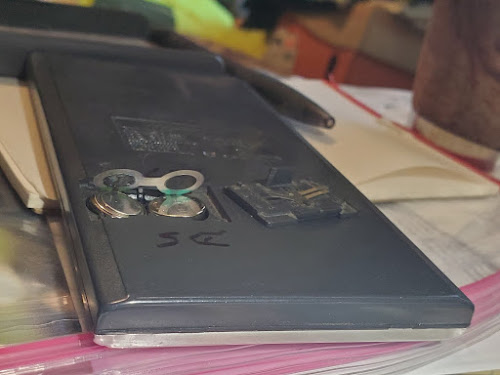I bought my TI-35 Plus scientific calendar in 1990, the same year my son was born.
It was purchased to get me through my Aircraft Electronics math courses at Blackhawk Technical College in Janesville, Wisconsin. I graduated from that program with honors & a 3.9 GPA, straight-A student in the Spring of 1993.
The calculator served me well for a few years, but then it was relegated to my tool box after I started math courses at MSOE, where a TI-88 graphing calculator was mandated.
I later gave the TI-88 to my stepson, who was taking a dual-bachelor of engineering program at UI Champaign-Urbana around Y2K.
By then the batteries in the TI-35 (Eveready 357) were long-drained and cheap drugstore calculators were all over and abundant.
Still, I kept the TI-35 around, more for nostalgia than anything else.
Well, here in August of 2020, I pulled out the vintage TI-35+ and attempted to put fresh batteries in after a little rubbing alcohol on a Q-tip (Standard electrical contact cleaning technique I learned in the Air Force) to clean the green oxidase fuzz off the battery contacts.
The calculator turned on, but the display was super dim, and I had to turn the calculator at a steep angle to see the 30-year-old monochrome black LCD display, but the calculator worked and was able to do calculations.
After trying several other new batteries in the calculator, I began to suspect that the plastic contact tabs were broken.
I did a search online to see if it might be possible to get the old calculator repaired, and all that came up was people talking about repairing their own.
One fellow was talking about cleaning the contactors with Scotch-Brite, which I don't have handy. However, I do have fingernails and paper towels. Paper can often act like a super-fine sandpaper. I used my fingernail to clean the worst of the oxidase off, and then used the paper towel piece to polish it until they shined.
The result was a fully-functional 30-year old scientific calculator, and an old friend brought back to life, as you can see below.
The part of the contactors that touches the battery must be thoroughly cleaned and polished.
A working TI-35 Plus after 29 years sitting idle.
I took it one step further: After 21.5 years in long-distance telecommunications and working with DC power cabling, I had learned the benefits of Noalox. What Noalox does is coat the metal with conductive grease (has zinc suspended in the grease for conductivity) and prevent the oxidation that naturally occurs when two dissimilar metals come into contact. This is made worse by the flow of electrical current. I put a Q-tip dab of Noalox on each contactor.
Dan





Comments
Post a Comment